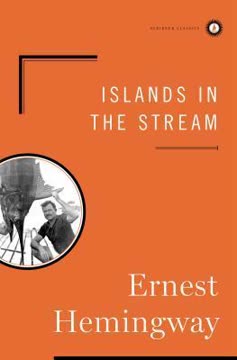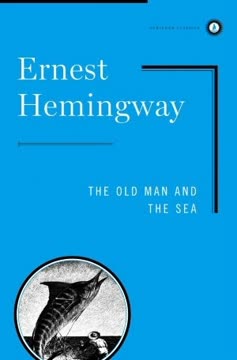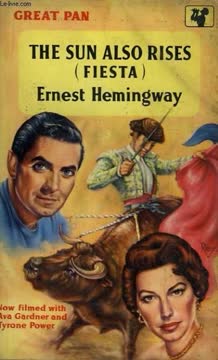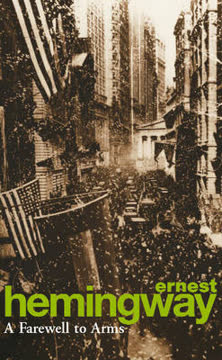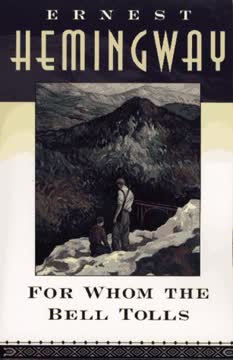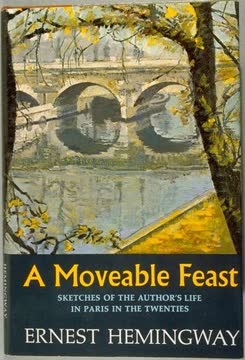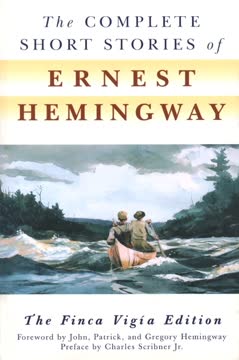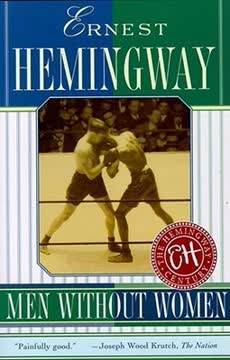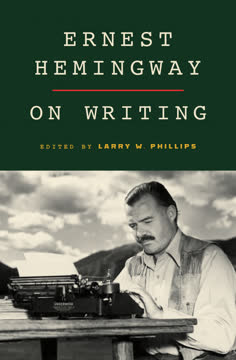Plot Summary
Solitude on Bimini Shores
Thomas Hudson, a successful but emotionally scarred painter, lives alone on the Caribbean island of Bimini. His house, built to withstand hurricanes, is both fortress and sanctuary, a place where he can work, reflect, and try to keep the chaos of his past at bay. The rhythms of the sea and the island's weather become his companions, and the house itself feels like a ship, always bracing for the next storm. Hudson's life is one of self-imposed discipline, his art a bulwark against loneliness and regret. Yet, beneath the surface, memories and unresolved feelings churn, waiting for the return of his sons and the inevitable disruptions they bring.
Sons Return, Old Wounds
Hudson's three sons arrive for a summer visit, each carrying the marks of their different mothers and upbringings. The reunion is joyful but fraught, as the boys' presence reopens wounds from Hudson's failed marriages and the compromises of divorce. The boys—Tom, David, and Andrew—bring energy and chaos, challenging Hudson's routines and forcing him to confront his own shortcomings as a father and husband. The island becomes a stage for their adventures and arguments, but also for Hudson's introspection about love, loss, and the choices that have shaped his life.
Summer of Sharks and Swordfish
The summer is marked by vivid episodes of fishing, swimming, and underwater exploration. In a harrowing scene, David is attacked by a shark and later battles a massive swordfish, an ordeal that becomes a rite of passage. The boys' courage, rivalry, and vulnerability are on full display, and Hudson is both proud and terrified for them. These moments on the water are more than sport—they are tests of character, endurance, and the bonds between father and sons. The sea, beautiful and dangerous, is both playground and crucible.
Friends, Fights, and Firelight
Hudson's friends—Roger, Bobby, and others—drift in and out of the island's social orbit, bringing with them humor, drinking, and the occasional brawl. The camaraderie is real but often edged with bitterness, as old grievances and personal failures surface. Nights are spent in bars, around fires, or on boats, where stories are told, tempers flare, and the line between fun and violence blurs. The island's isolation intensifies every emotion, and Hudson's relationships with his friends are as complex and fraught as those with his family.
Fathers, Artists, and Regrets
Hudson's identity as a painter is inseparable from his role as a father and his history as a lover. He reflects on his artistic discipline, the sacrifices he's made, and the women he's loved and lost. The presence of his sons forces him to reckon with the ways he has failed them and himself. Through conversations, reminiscences, and the act of painting itself, Hudson tries to make sense of his life's trajectory. The past is always present, and regret is a constant undertow.
The Sea's Unforgiving Lessons
The sea is both muse and adversary. Its moods dictate the rhythms of island life, and its dangers are ever-present. The boys' encounters with sharks and the epic struggle with the swordfish are reminders of nature as mirror and adversary. Hudson's respect for the sea is matched by his fear, and he imparts both to his sons. The lessons of the ocean are harsh but honest, stripping away illusions and demanding courage.
Losses and Letters from Afar
After the boys leave, Hudson receives a telegram: David and Andrew, along with their mother, have been killed in a car accident in France. The news is shattering, plunging Hudson into a grief that is both numbing and all-consuming. The routines and disciplines that once sustained him now seem hollow. Letters from friends and family arrive, but nothing can fill the void left by his sons' deaths. The island, once a place of solace, becomes a landscape of mourning.
Havana's Shadows and Sorrows
Hudson travels to Havana, seeking distraction in the city's bars, brothels, and social circles. He reconnects with old friends and lovers, including a brief, bittersweet reunion with the woman he loved most. The city is vibrant but haunted, its pleasures unable to mask Hudson's sorrow. He drinks, reminisces, and tries to lose himself in the noise and color of Havana, but the weight of loss follows him everywhere. The contrast between the city's life and his own emptiness is stark.
Duty Calls, Love Lingers
With the outbreak of World War II, Hudson is drawn into clandestine work for the Allies, using his boat and knowledge of the sea to hunt German submarines and their crews. The mission is dangerous and demands a new kind of discipline. Amidst the tension and violence, Hudson's thoughts return to his lost sons and the women he has loved. The war is both a distraction and a crucible, forcing him to confront the meaning of duty, sacrifice, and the possibility of redemption.
Pursuit Across the Keys
Hudson and his crew pursue a group of German survivors across the Bahamian and Cuban keys. The chase is grueling, marked by exhaustion, uncertainty, and the ever-present threat of violence. The men are tested physically and morally, as the line between hunter and hunted blurs. The pursuit becomes a metaphor for Hudson's own search for meaning and closure, as he grapples with the ethics of war and the cost of vengeance.
The Massacre Key Discovery
The crew discovers a burned-out village and the bodies of murdered islanders, evidence of the Germans' ruthlessness. The find is both a clue and a horror, deepening the sense of moral ambiguity. Hudson is forced to think like his enemy, anticipating their moves and motivations. The pursuit becomes more desperate, and the cost—both physical and psychological—mounts. The sea, once a place of beauty, is now a battlefield.
Chasing Ghosts, Losing Friends
As the chase continues, the crew suffers losses—most notably the death of their radio operator, Peters. The camaraderie that once sustained them is strained by grief, fear, and the relentless demands of the mission. Hudson is haunted by the ghosts of his sons, his friends, and his own past. The pursuit is no longer just about catching the enemy; it is about survival, loyalty, and the search for some kind of meaning in the face of chaos.
The Final Stand in Mangroves
The pursuit ends in a violent confrontation in the mangroves, where the Germans make their last stand. The battle is brutal and costly, with more deaths on both sides. Hudson is wounded, and the victory feels empty. The enemy is defeated, but the sense of loss is overwhelming. The mangroves, once a place of life and growth, are now a graveyard.
Wounds, Remorse, and Reflection
Hudson, gravely wounded, reflects on the cost of the chase and the lives lost—his own men, the enemy, and most of all, his sons. The physical pain is matched by emotional anguish. He is surrounded by friends who care for him, but the sense of isolation is profound. The war, the sea, and the past have all taken their toll, and Hudson is left to reckon with what remains.
The End of the Stream
As Hudson's life ebbs, he finds a measure of acceptance. The stream of his life—its joys, sorrows, loves, and losses—has run its course. The novel ends not with triumph, but with a quiet acknowledgment of mortality and the enduring power of memory, love, and art. The sea, indifferent and eternal, remains.
Characters
Thomas Hudson
Thomas Hudson is the novel's central figure—a talented painter, a father marked by loss, and a man whose life is shaped by discipline, regret, and a deep connection to the sea. His relationships with his sons are loving but complicated, scarred by divorce and absence. Hudson's artistic discipline is both a refuge and a prison, and his attempts to find meaning through work, love, and duty are constantly undermined by grief and self-doubt. As the story progresses, Hudson is forced to confront the limits of his control—over his art, his family, and his fate. His psychological complexity is the novel's core: he is introspective, self-critical, and deeply human, seeking redemption in a world that offers little comfort.
Tom (Young Tom)
Young Tom is Hudson's oldest son, a product of his first marriage and the child he feels closest to. Intelligent, sensitive, and precocious, Tom is both a source of pride and a reminder of what Hudson has lost. His death in the war (revealed through letters) is a devastating blow, and his memory haunts Hudson throughout the novel. Tom represents both the promise of youth and the inevitability of loss.
David
David is the middle son, marked by a quiet strength and a deep bond with his father. His ordeal with the shark and the swordfish is a defining moment, a test of manhood and resilience. David's death in the car accident, along with his brother Andrew and their mother, is the novel's emotional nadir. He embodies the vulnerability of youth and the randomness of fate.
Andrew (Andy)
Andrew is the youngest, a mischievous and athletic boy with a dark streak that only Hudson seems to understand. He is both a source of joy and worry, his precocity masking a deeper complexity. Andrew's death, alongside David's, compounds Hudson's grief and sense of failure as a father.
Roger Davis
Roger is Hudson's close friend, a writer struggling with his own demons. Their relationship is marked by camaraderie, rivalry, and mutual respect. Roger's struggles with work, love, and self-destruction mirror Hudson's own, and their conversations provide much of the novel's psychological depth. Roger is both confidant and foil, a reminder of the difficulty of living with integrity.
Bobby
Bobby is the owner of the island's bar, a larger-than-life figure whose humor and bluster mask a deep understanding of human nature. He provides comic relief but also serves as a kind of chorus, commenting on the action and offering insights into the characters' struggles. Bobby's friendship with Hudson is genuine, and his presence grounds the novel in the realities of island life.
Antonio
Antonio is Hudson's mate on the boat, a skilled sailor and a man of few words. His competence and loyalty are essential to the success of the mission, and his relationship with Hudson is built on mutual respect. Antonio represents the virtues of professionalism, courage, and quiet strength.
Ara
Ara is one of the Basque crew, known for his physical strength, skill, and unwavering loyalty. He is both a comic figure and a formidable presence in moments of crisis. Ara's relationship with Hudson is marked by trust and affection, and his actions in the final pursuit are crucial.
Willie
Willie is a former Marine, scarred by war and prone to dark humor. His bravado masks vulnerability, and his loyalty to Hudson is fierce. Willie's role in the final chase is pivotal, and his relationship with Hudson is a mix of camaraderie, rivalry, and mutual dependence.
Peters
Peters is the ship's radio operator, a man with a troubled past and a sense of not quite belonging. His technical skills are vital, but his death during the pursuit is a reminder of the randomness and brutality of war. Peters' outsider status and ultimate sacrifice add to the novel's sense of loss.
Plot Devices
Three-Part Structure
The novel is divided into three distinct parts—Bimini, Cuba, and At Sea—each representing a different phase of Hudson's life and psychological journey. The structure allows Hemingway to explore themes of family, art, love, and war in distinct but interconnected settings. The progression from domestic life to loss and finally to action and violence mirrors Hudson's internal trajectory.
Nature as Mirror and Adversary
The sea, weather, and island landscapes are not just backdrops but active participants in the story. Storms, calms, and the rhythms of nature mirror the characters' emotional states and serve as metaphors for fate, mortality, and the unpredictability of life. The sea's beauty and danger are ever-present, shaping the characters' actions and outlook.
Initiation and Rite of Passage
The boys' encounters with sharks and swordfish, as well as the adult characters' confrontations with violence and loss, function as rites of passage. These episodes test the characters' courage, endurance, and capacity for love and grief. The novel uses these trials to explore what it means to become a man, a father, and a human being.
Foreshadowing and Recurrence
Hemingway employs foreshadowing—through conversations, memories, and the ever-present threat of the sea—to build a sense of impending loss. The recurrence of certain images (fire, water, storms, art) and themes (regret, discipline, love) creates a cyclical structure, emphasizing the inescapability of fate and the persistence of memory.
War as Catalyst and Escape
The outbreak of war provides both a distraction from personal grief and a new arena for testing character. The pursuit of the Germans is both literal and symbolic—a way for Hudson to channel his pain, assert control, and seek redemption. The violence of war is depicted as both senseless and necessary, a crucible that reveals the best and worst in men.
Psychological Realism
Much of the novel's power comes from its psychological depth—Hudson's introspection, self-doubt, and search for meaning. The use of inner monologue, dreams, and conversations allows Hemingway to explore existential questions about love, loss, duty, and the possibility of redemption. The narrative structure blurs the line between action and reflection, making the reader complicit in Hudson's struggles.
Analysis
Islands in the Stream is Hemingway's most personal and elegiac novel, a work that distills his lifelong preoccupations with art, fatherhood, love, and the sea. Through the character of Thomas Hudson, Hemingway explores the costs of discipline, the inevitability of loss, and the difficulty of finding purpose in a world marked by violence and change. The novel's three-part structure—moving from domestic idyll to tragedy to the relentless pursuit of enemies—mirrors the arc of a life shaped by both beauty and brutality. Hemingway's prose is at its most vivid and muscular, capturing the rhythms of nature, the intensity of action, and the quiet agony of grief. The book's lessons are hard-won: that love is always shadowed by loss, that duty can be both a refuge and a burden, and that the search for meaning is never complete. In the end, Islands in the Stream is less about victory or redemption than about endurance—the ability to keep going, to keep loving, and to keep creating, even as the stream of life carries us inexorably toward its end.
Last updated:
FAQ
Synopsis & Basic Details
What is Islands in the Stream about?
- A Painter's Fragmented Life: Islands in the Stream follows Thomas Hudson, a successful American painter living a disciplined, solitary life on Bimini, whose existence is profoundly shaped by his three sons from two failed marriages. The narrative unfolds in three distinct acts: a joyful summer with his boys, a period of deep grief and introspection in Havana after their tragic deaths, and a dangerous, clandestine mission at sea during World War II.
- Search for Meaning Amidst Loss: The novel explores Hudson's attempts to cope with immense personal loss—the absence of his wives, and later, the devastating deaths of all his sons. He grapples with regret, love, and the search for purpose, finding temporary solace in his art, the camaraderie of friends, and ultimately, a grim sense of duty.
- Hemingway's Semi-Autobiographical Exploration: This posthumously published work is deeply personal, drawing heavily on Ernest Hemingway's own experiences, particularly his life in the Caribbean, his relationships with his sons, and his involvement in anti-submarine efforts during the war. It's a poignant meditation on themes of fatherhood, masculinity, art, and the enduring impact of grief.
Why should I read Islands in the Stream?
- Deep Emotional Resonance: Readers seeking a profound exploration of grief, love, and the human spirit's resilience will find Thomas Hudson's journey incredibly moving. The novel delves into the psychological complexities of loss, offering an intimate look at how one man navigates unimaginable sorrow.
- Classic Hemingway Prose: Experience Hemingway's signature sparse, direct, yet deeply evocative writing style at its mature best. The vivid descriptions of the Caribbean sea, the intensity of fishing, and the stark realities of war are rendered with a precision and sensory detail that immerse the reader.
- Action and Philosophical Depth: Beyond its emotional core, the book delivers thrilling action sequences, particularly the epic swordfish battle and the tense anti-submarine pursuit. These moments of external conflict are seamlessly interwoven with Hudson's internal philosophical struggles, making for a rich and multifaceted reading experience.
What is the background of Islands in the Stream?
- Posthumous Publication & Autobiographical Roots: Islands in the Stream was published in 1970, nine years after Ernest Hemingway's death. It was compiled by his widow, Mary Hemingway, from several unfinished manuscripts. The novel is highly autobiographical, with Thomas Hudson often seen as a thinly veiled representation of Hemingway himself, reflecting his life in Bimini and Cuba, his relationships with his sons (particularly Patrick and Gregory), and his wartime activities.
- World War II Context: The final section, "At Sea," is set during World War II, drawing on Hemingway's real-life experiences commanding his fishing boat, the Pilar, in anti-submarine patrols off the coast of Cuba. This historical backdrop provides a framework for Hudson's shift from personal grief to a sense of national duty, blending his private sorrows with the larger global conflict.
- Caribbean Setting & Lifestyle: The novel is deeply rooted in its Caribbean settings—Bimini and Cuba. Hemingway meticulously details the local culture, the rhythms of island life, the challenges of the sea, and the diverse characters who inhabit these locales. This geographical and cultural immersion is central to the novel's atmosphere and Hudson's character development.
What are the most memorable quotes in Islands in the Stream?
- "I don't have to be proud of it. I only have to do it well." (Part I, Ch I & Part III, Ch VI): This quote, first appearing as Hudson's artistic credo and later as his grim resolve in wartime, encapsulates his disciplined approach to life and work. It highlights the separation of personal feeling from professional execution, a core theme in Islands in the Stream analysis and Thomas Hudson motivations.
- "You never get over it and sooner or later I have to tell it. I'm ashamed of that the way I'm ashamed of the fight on the dock." (Part I, Ch VI): Spoken by Roger Davis, this line reveals the enduring nature of trauma and guilt, particularly regarding the loss of a loved one. It foreshadows Hudson's own profound, unshakeable grief and the psychological burden of past actions.
- "All your life is just pointed toward it. But why couldn't Ara not have shot that son of a bitch so we would have something to show for it all so it would have done some good. I don't mean good. I mean so it would have been some use." (Part III, Ch XXI): Uttered by a dying Thomas Hudson, this quote reflects his ultimate disillusionment with the utility of violence and sacrifice. It questions the meaning of their mission and the broader purpose of war, a powerful statement on themes in Islands in the Stream and the futility of vengeance.
What writing style, narrative choices, and literary techniques does Ernest Hemingway use?
- Iceberg Theory & Subtext: Hemingway masterfully employs his "iceberg theory," where much of the story's emotional and psychological depth lies beneath the surface of sparse, declarative prose. Readers must infer characters' true feelings and motivations from their actions, dialogue, and subtle internal monologues, enriching the Islands in the Stream analysis.
- Sensory Detail & Immersive Setting: The narrative is rich with precise sensory details—the smell of the sea, the feel of the wind, the taste of drinks, the visual clarity of underwater scenes. This creates an immersive experience, making the settings of Bimini, Havana, and the open sea feel tangible and alive, crucial for understanding the symbolism in Islands in the Stream.
- Stream of Consciousness & Internal Monologue: Particularly in the later sections, Hemingway delves into Thomas Hudson's thoughts and memories through extended internal monologues. This technique provides direct access to Hudson's grief, regrets, and philosophical reflections, offering deep insight into Thomas Hudson's psychological complexities and his coping mechanisms.
Hidden Details & Subtle Connections
What are some minor details that add significant meaning?
- The House as a Ship's Embodiment: Thomas Hudson consistently refers to his Bimini house as "her," like a ship, built "solid as a ship" to ride out hurricanes (Part I, Ch I). This detail subtly foreshadows his later role as a boat captain and commander, suggesting his inherent connection to the sea and his need for a stable, resilient vessel—both literally and metaphorically—to navigate life's storms.
- Burning Driftwood's Bittersweetness: Hudson's fondness for driftwood, which he then burns, evokes a complex emotional response: "it made him both sad and happy" (Part I, Ch I). This seemingly minor habit symbolizes the ephemeral nature of beauty and life, and his acceptance of destruction as a natural part of existence, a precursor to his later, more profound losses and his ability to find a strange peace in them.
- Boise the Cat's Silent Purr and Desperate Love: The cat Boise, named after a cruiser, has a "silent purr" and exhibits "desperate, hopeless love" for Hudson (Part II, Ch I). This detail highlights the unspoken bonds and shared grief between humans and animals, mirroring Hudson's own deep, often unarticulated affection and sorrow. The cat's quiet presence offers a profound connection that words often fail to convey, a subtle symbolism in Islands in the Stream.
What are some subtle foreshadowing and callbacks?
- Roger's Drowning Brother Echoes David's Fate: Roger Davis's confession about his younger brother, David, drowning in a canoe accident (Part I, Ch VI) is a poignant piece of foreshadowing. The shared name and the theme of losing a younger brother to water tragically prefigure David Hudson's own death, deepening Roger's later empathy for Thomas Hudson's grief and highlighting the cyclical nature of loss.
- Bobby's "End of the World" Painting Idea: Bobby's outlandish, grotesque vision of painting "the End of the World" (Part I, Ch III), complete with devils, chaos, and a rising sea, serves as a dark, exaggerated foreshadowing. It contrasts sharply with the very real, personal "end of the world" Hudson experiences with the deaths of his sons, making the later tragedy more impactful by its grounded, intimate horror compared to Bobby's fantastical one.
- "I don't have to be proud of it. I only have to do it well.": This phrase, first introduced as Hudson's artistic philosophy in Part I, Ch I, becomes a powerful callback and a grim mantra in Part III, Ch VI, when he applies it to his wartime duty. Its recurrence underscores Hudson's unwavering commitment to competence and discipline, even when stripped of personal satisfaction or moral pride, revealing a core aspect of Thomas Hudson's motivations.
What are some unexpected character connections?
- Thomas Hudson and Roger Davis's Parallel Romantic Failures: Beyond their friendship, Hudson and Roger share a history of "stupidly and badly" behaving with women, and both struggle with the aftermath of failed relationships (Part I, Ch VIII). This parallel connection reveals Roger as a mirror for Hudson's own romantic regrets and self-destructive patterns, deepening the psychological realism of both characters' struggles with love and commitment.
- Honest Lil's Profound Empathy for Hudson's Grief: Despite her profession and initial lighthearted banter, Honest Lil demonstrates a surprising depth of understanding and empathy for Hudson's sorrow over his son's death (Part II, Ch X). Her ability to connect with his pain, even when others fail, highlights that genuine human connection and solace can be found in unexpected places, transcending social judgments.
- David Hudson's Connection to Roger's Lost Brother: The revelation that Roger's drowned younger brother was also named David (Part I, Ch VI) creates a profound, almost mystical connection between the two characters. This shared name and tragic history imbues David Hudson's character with an added layer of vulnerability and poignancy, making his eventual death resonate more deeply with Roger's unresolved grief.
Who are the most significant supporting characters?
- Eddy, the Loyal and Intuitive Cook/Protector: Eddy transcends the role of a mere cook; he is a fiercely loyal and intuitive member of Hudson's inner circle. His quick thinking and decisive action during the shark attack on David (Part I, Ch VII) highlight his protective nature and deep affection for the boys. Eddy's "rummy" persona often masks a profound wisdom and an almost paternal concern, making him a crucial emotional anchor for Hudson.
- Willie, the Cynical but Courageous Marine: Willie, a former Marine, provides much of the novel's dark humor and fatalistic outlook, often processing trauma through cynicism (Part III, Ch VI). Despite his rough exterior and "bad eye," his loyalty to Hudson is unwavering, and his combat experience proves invaluable during the pursuit of the Germans. Willie's character explores how individuals cope with the brutal realities of war and personal loss through a blend of bravado and deep-seated vulnerability.
- Honest Lil, the Empathetic Confidante: Honest Lil, a Havana prostitute, offers Thomas Hudson a unique blend of practical wisdom, emotional honesty, and unwavering support (Part II, Ch X). She sees through his defenses and provides a space for him to articulate his grief, even when he struggles to do so. Her character challenges conventional morality, demonstrating that profound human connection and solace can emerge from unexpected relationships.
Psychological, Emotional, & Relational Analysis
What are some unspoken motivations of the characters?
- Thomas Hudson's Pursuit of Discipline as a Shield: Hudson's rigorous artistic discipline and later his relentless pursuit of the German survivors are unspoken attempts to control the chaos of his emotional life and to outrun his grief and regrets. His dedication to "doing it well" (Part I, Ch I) is a coping mechanism, a way to impose order on a world that has repeatedly delivered devastating loss, a key aspect of Thomas Hudson's motivations.
- David's Drive for Validation in the Swordfish Fight: Beyond the thrill of the catch, David's unwavering determination to land the massive swordfish (Part I, Ch IX) is subtly motivated by a desire for his father's approval and a need to prove his own strength and courage. His eventual confession of "loving" the fish reveals a deeper, unspoken empathy that transcends the competitive drive.
- Roger Davis's Self-Sabotage as a Form of Punishment: Roger's struggles with writing, his "on the town" behavior, and his destructive relationships (Part I, Ch VIII) are implicitly driven by unresolved guilt and a need for self-punishment, stemming from his childhood trauma of losing his brother. His inability to find lasting happiness or artistic fulfillment is a manifestation of this internal conflict, central to Roger Davis's psychological analysis.
What psychological complexities do the characters exhibit?
- Hudson's Numbness and Vicarious Sin: After his sons' deaths, Hudson experiences a profound emotional numbness, punctuated by moments of intense, almost physical pain (Part I, Ch XIV). David's earlier observation about feeling "vicarious sin" (Part I, Ch XI) foreshadows Hudson's later burden of collective guilt and suffering, suggesting a deep empathy that makes him absorb the world's pain.
- Willie's Cynical Bravado as a Trauma Response: Willie's constant dark humor, his "black ass," and his seemingly detached attitude towards violence (Part III, Ch X) are complex psychological defenses. Having been "brought up on the goddamned stuff" of grief, his cynicism is a coping mechanism to process the horrors of war and personal loss, revealing a deep-seated vulnerability beneath his tough exterior.
- Peters's False Discipline and Hidden Vulnerability: Peters, the radio operator, maintains a facade of military discipline, even when drunk, saluting and speaking formally (Part III, Ch VIII). This "false carried so far that it is made true" discipline masks his personal problems and alcoholism, suggesting a deep-seated need for structure and acceptance. His death highlights the fragility of these defenses in the face of real danger.
What are the major emotional turning points?
- The Telegram of Loss: The arrival of the telegram announcing the deaths of David and Andrew (Part I, Ch XIV) is the novel's most devastating emotional turning point. It shatters Hudson's carefully constructed life of discipline and routine, plunging him into a grief so profound that it leaves him "hollow sick" and questioning the very meaning of his existence.
- David's Love for the Swordfish: During the epic struggle, David confesses, "I loved him so much when I saw him coming up that I couldn't stand it... Now I don't give a shit I lost him... I'm glad that he's all right and that I'm all right. We aren't enemies" (Part I, Ch IX). This moment marks a profound emotional shift, transcending the hunter-prey dynamic and revealing a deep, empathetic connection to nature, a key insight into David Hudson's character development.
- Hudson's Reunion with His First Wife: The brief, intense reunion with his first wife in Havana (Part II, Ch XV) is a bittersweet emotional turning point. Despite their past, their shared history and enduring love resurface, offering a fleeting moment of connection and understanding amidst his overwhelming grief. It highlights the enduring power of certain relationships, even when fractured by time and circumstance.
How do relationship dynamics evolve?
- Hudson's Fatherhood: From Distance to Deep Connection and Loss: Initially, Thomas Hudson's relationship with his sons is marked by the distance of divorce and his self-imposed isolation. The summer on Bimini allows for a deep, joyful reconnection, filled with shared adventures and profound understanding. However, their tragic deaths transform his fatherhood into a haunting memory, a source of enduring grief that shapes his subsequent actions and internal world.
- Male Camaraderie: A Fragile Shield Against Despair: The relationships among Hudson and his crew (Antonio, Ara, Willie, Henry, Peters) evolve from professional duty to a deep, albeit often unspoken, camaraderie forged in shared danger and loss. This bond provides a temporary shield against individual despair, offering mutual support and a sense of belonging. However, the constant threat of death and the moral ambiguities of their mission test these relationships, revealing their fragility.
- Love and Regret: The Enduring Power of Past Relationships: Hudson's relationships with his former wives, particularly his first wife, are revisited through memory and a brief reunion. These interactions reveal a complex tapestry of enduring love, profound regret, and the lasting impact of past choices. The novel suggests that some loves, even when lost or broken, continue to shape a person's emotional landscape, influencing their present and future.
Interpretation & Debate
Which parts of the story remain ambiguous or open-ended?
- The Ultimate Fate of the German Survivors: The novel concludes with Thomas Hudson's crew having engaged the German survivors, but their ultimate capture or escape is left ambiguous (Part III, Ch XXI). The focus shifts from the external mission to Hudson's internal state, leaving the reader to ponder the practical outcome of the chase, emphasizing the futility of the pursuit itself over its resolution.
- The True Nature of Hudson's "Duty": While Hudson is engaged in a clear wartime mission, the underlying motivation for his relentless pursuit of the Germans remains open to interpretation. Is it a genuine sense of patriotic duty, a form of self-punishment, an escape from his grief, or a desperate attempt to find meaning in action? The novel allows for multiple readings of Thomas Hudson's motivations and the purpose of his final actions.
- The Meaning of the Final Line: The novel ends with Willie's poignant statement to a dying Hudson: "You never understand anybody that loves you" (Part III, Ch XXI). This line is profoundly open-ended, inviting readers to reflect on the limits of human understanding, the complexities of love, and the isolation inherent in deep personal experience, especially in the face of death. It leaves the reader with a lingering question about the nature of connection and empathy.
What are some debatable, controversial scenes or moments in Islands in the Stream?
- Roger's Brutal Fight on the Dock: The scene where Roger Davis brutally beats a rude yacht owner (Part I, Ch IV) is highly debatable. Roger takes "pleasure in it from the minute it started," raising questions about the nature of violence, self-control, and the thin line between justice and savagery. It forces readers to confront the darker aspects of human nature and the characters' capacity for brutality, a key point in Islands in the Stream analysis.
- The "Rummy" Charade at Bobby's Bar: The elaborate charade orchestrated by Roger and the boys, pretending to be drunkards and artists, to shock the yachting tourists (Part I, Ch XI) is controversial. While intended as a critique of
Review Summary
Islands in the Stream received mixed reviews, with many praising Hemingway's vivid prose and ability to evoke strong emotions, particularly in depicting grief and loss. Some readers found the novel's three-part structure disjointed, while others appreciated the evolution of the protagonist, Thomas Hudson. Critics noted the book's posthumous publication may have affected its polish. Many readers connected with the Caribbean setting and Hemingway's exploration of masculinity, though some found the dialogue and pacing problematic. Overall, fans of Hemingway's style generally enjoyed the work despite its flaws.
Download PDF
Download EPUB
.epub digital book format is ideal for reading ebooks on phones, tablets, and e-readers.
